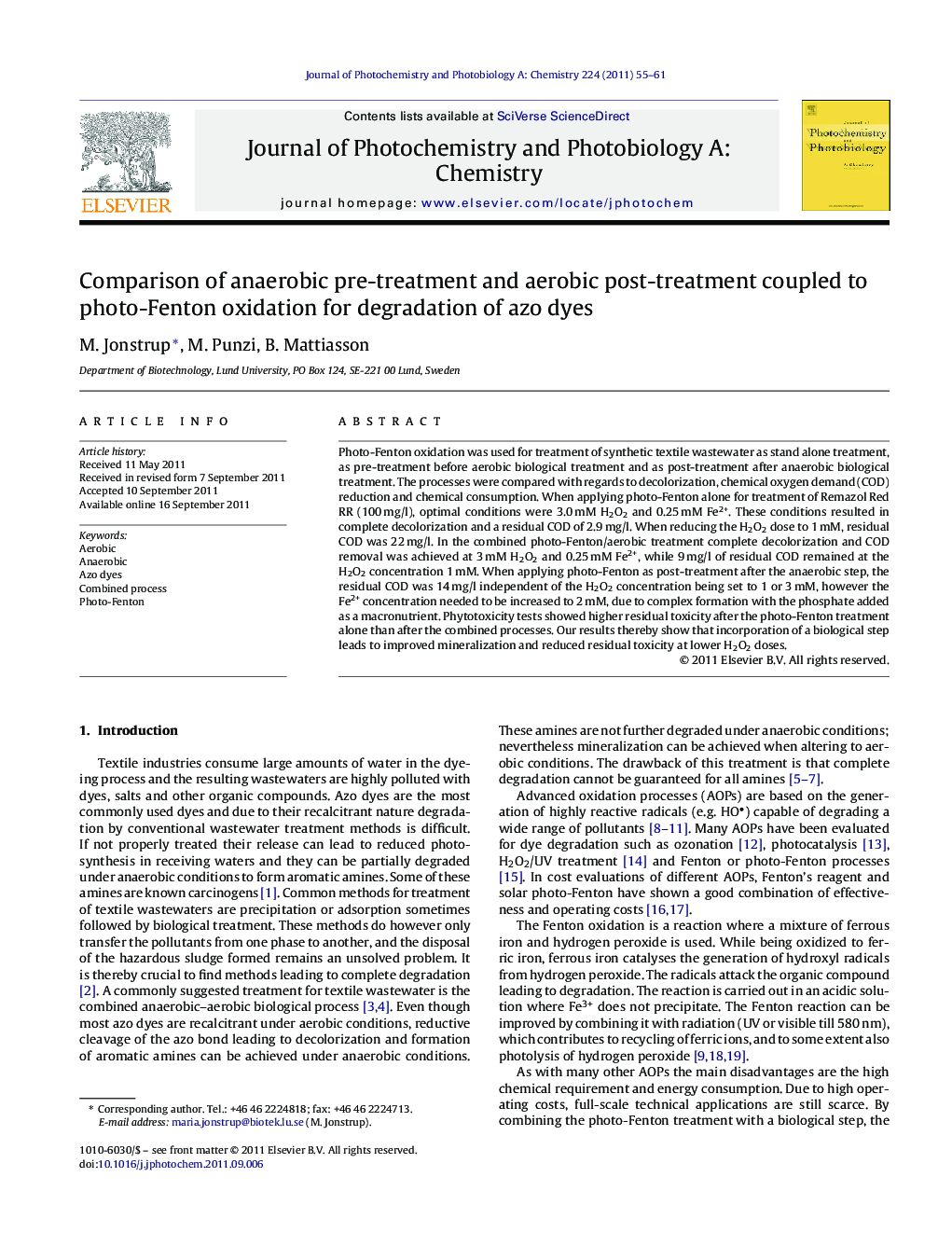| Article ID | Journal | Published Year | Pages | File Type |
|---|---|---|---|---|
| 27326 | Journal of Photochemistry and Photobiology A: Chemistry | 2011 | 7 Pages |
Photo-Fenton oxidation was used for treatment of synthetic textile wastewater as stand alone treatment, as pre-treatment before aerobic biological treatment and as post-treatment after anaerobic biological treatment. The processes were compared with regards to decolorization, chemical oxygen demand (COD) reduction and chemical consumption. When applying photo-Fenton alone for treatment of Remazol Red RR (100 mg/l), optimal conditions were 3.0 mM H2O2 and 0.25 mM Fe2+. These conditions resulted in complete decolorization and a residual COD of 2.9 mg/l. When reducing the H2O2 dose to 1 mM, residual COD was 22 mg/l. In the combined photo-Fenton/aerobic treatment complete decolorization and COD removal was achieved at 3 mM H2O2 and 0.25 mM Fe2+, while 9 mg/l of residual COD remained at the H2O2 concentration 1 mM. When applying photo-Fenton as post-treatment after the anaerobic step, the residual COD was 14 mg/l independent of the H2O2 concentration being set to 1 or 3 mM, however the Fe2+ concentration needed to be increased to 2 mM, due to complex formation with the phosphate added as a macronutrient. Phytotoxicity tests showed higher residual toxicity after the photo-Fenton treatment alone than after the combined processes. Our results thereby show that incorporation of a biological step leads to improved mineralization and reduced residual toxicity at lower H2O2 doses.
► Complete dye decolorization and 2.9 mg/l residual COD achieved using photo-Fenton. ► Comparison of aerobic and anaerobic treatment coupled to photo-Fenton. ► Incorporation of a biological step improved mineralization at lower H2O2 doses.
